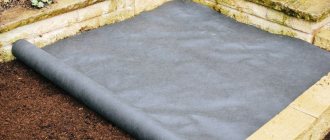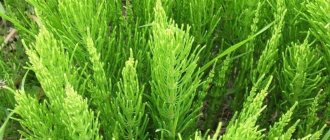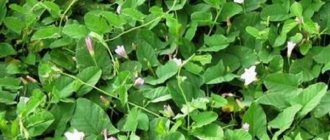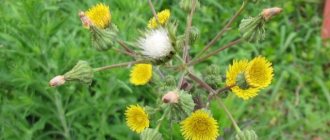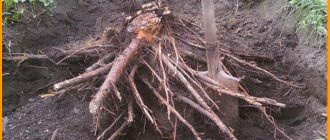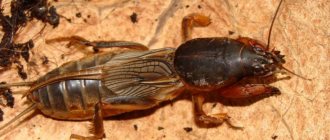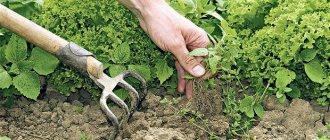Does digging help deal with the most difficult weeds?
This is a very effective, although labor-intensive method. It is this that will allow you to get rid of such nasty things as dandelions, sow thistle and wheatgrass. You need to dig up the area and pick out all the rhizomes with your hands. But there are two subtleties here:
- You need to dig up the area by hand and with a pitchfork, not with a shovel. A shovel or, especially, a walk-behind tractor will inevitably cut the weed roots into pieces, and a new weed will grow from each one.
- you need to dig, finely breaking up clods of earth.
Aunt LauraForumHouse Member
We were allocated plots for potatoes on a former mowing meadow. A tractor came by and plowed with a huge blade. Hardworking neighbors stood like shrimp, selected wheatgrass and laid them along the borders of the beds. And my village husband carefully dug up the bed so that the roots were at the top (my husband said that they would dry in the sun (this is what we do in Arkhangelsk) and broke these clods with a shovel. Then we planted potatoes right in this grass. The potatoes grew wonderfully from the weeds there was only quinoa... which we brought in with manure. But the neighbors grew frail potatoes (they carried away all the humus with the grass). So now wheatgrass is not a problem for me.
Chemicals
To avoid spending a lot of physical effort removing weeds, you can use herbicides. When using them, you should know how to treat this or that vegetation.
Basically, weeds in the garden are sprayed with glyphosate-based herbicides:
- Tornado.
- Roundup.
- Hurricane Forte.
- Glyphos.
It should be processed in calm, preferably cloudy weather or in the late afternoon when the heat subsides . This is done so that the drug has time to be absorbed into the leaves. Targeted drugs are used in vegetable gardens and flower beds. They are used spot-on so that the product does not get on flowers, leaves and other parts of the cultivated plant.
But the spot application of chemicals is a rather painstaking procedure. It is much more effective to use them before sowing cultivated plants, so that there are no unpleasant surprises. This is especially true for the lawn. Careless use will not only remove weeds from the lawn, but also the lawn itself.
General herbicides should be applied 15-20 days before sowing. The drug destroys all plants on the site, regardless of their usefulness. In addition, it will remove all unwanted vegetation in virgin areas and in closed greenhouses where nothing is growing yet. They must be used with caution, remembering to carefully study the recommendations for use and strictly follow them.
Be sure to use personal protective equipment:
- glasses;
- gloves;
- respirator.
“People's agronomists” do not approve of manual weeding. Is it effective?
Hand weeding remains one of the most effective methods of weed control.
But regularity is important in this agricultural activity, so it is best suited for those who constantly live near the garden and do not come for the weekend. If you remove new shoots of even the most tenacious weeds with powerful roots (wheatgrass, sow thistle, field bindweed), then:
- this will inevitably weaken the root system;
- deprives the plant of solar energy.
Best Weed Killer Chemicals
The most popular among summer residents are modern chemical preparations for killing grass and weeds, the so-called herbicides. The area usually has to be cultivated before planting crops, but subsequently weed control is reduced to a minimum. Herbicides are well suited for treating very large or heavily overgrown gardens; limiting ourselves to weeding alone is simply irrational.
Lapis lazuli
A drug called Lapis Lazuli is excellent for destroying weeds in areas where it is planned to plant nightshades - potatoes, tomatoes or peppers.
The weed killer in the garden is effective on cereal plants and dicotyledonous annuals, and it can be used even if nightshade crops are already growing in the beds. “Lapis lazuli” will help destroy weeds, but will not cause damage to potatoes and tomatoes.
To remove weeds from the garden, it is recommended to treat the beds with Lazurite twice - before planting the seeds and a month after germination. Typically, a package of the product is diluted in 1 liter of water, after stirring, another 5 liters of liquid are poured in and the soil is sprayed with the solution.
Tornado
The main active ingredient of the herbicide is isopropylamine salt. When it gets on the above-ground parts and roots of weeds, the substance blocks the vital processes of the grass and leads to its death. A weed killer, diluted in a ratio of 25 ml per 1 liter of water, helps destroy more than 150 species of pest plants and copes not only with annuals and perennials, but even with shrubs. Annual weeds die just 5 days after spraying according to the instructions, and shrubs die off after about a month.
Attention! Tornado is a continuous action product - this means that it is necessary to treat the soil against weeds with a chemical solution before planting crops. Otherwise, the product can destroy both weeds and crop seedlings.
Hurricane Forte
A product called “Hurricane Forte” helps to destroy perennial and annual weeds even in heavily overgrown areas. A solution for killing weeds, which contains potassium salt, is diluted in 10 liters of water in an amount of 30 ml and sprayed over the entire area. Weeds disappear completely after 2-3 weeks, and re-treatment in the current season is usually no longer required.
Hurricane Forte is a continuous action product, but the drug has a detrimental effect on the roots, stems and leaves of plants. For cultivated seeds embedded in the soil, the product is completely harmless; the main thing is to treat the area before the first shoots emerge from the ground.
Roundup
Roundup has always been considered one of the best weed and grass killers. It contains glyphosate, or isopropylamine salt, and when sprayed over an area in a concentration of 60-120 ml per bucket of water, it penetrates the leaves and shoots of wild weeds. Vital processes in plant tissues are blocked, and weeds die en masse within 10 days after treatment.
The advantages of Roundup are that it is harmless to the soil and is also safe for pets. It is best to chemically destroy weeds in the garden in early spring, while there are still no shoots in the beds. When using weed control in the subsequent period, it is recommended to cover the cultivated plants with impermeable material.
Saltpeter
A very affordable and effective tool that helps destroy weeds is ordinary ammonium nitrate. It is beneficial to use it not only because saltpeter burns the vast majority of plant pests. The advantage also lies in the fact that the substance settles in the soil and then acts on crops as a fertilizer. Nitrogenous substances in ammonium nitrate are especially useful for garden plants in early spring; they contribute to the rapid development of seedlings.
To destroy weeds in the garden forever or for a very long time, use a very powerful concentration of saltpeter - about 3 kg of the substance per bucket of water. You can treat the area with this solution only before planting the seeds. But just a few days after treatment, the bulk of the nitrate will simply evaporate into the atmosphere, and a safe amount of nitrogen for plants will remain in the soil.
How effective is mulching for weed control?
Mulching is the favorite method of “national agronomists,” including Nikolai Kurdyumov, the author of the “smart garden” system. Ideally, there should be no uncovered soil left in the garden!
OLGA31 Member of FORUMHOUSE
It is necessary to populate everything with plants or cover the ground with mulch, paving slabs, lawn, or in the tree trunks - either annuals or mulch. Mulch under the bushes, non-fabric mulch on the beds, paving slabs (according to all laying rules), crushed stone, stone in the spaces between the rows. Whoever likes it, according to money, design.
You can mulch with cardboard, hay, freshly cut grass, bark or beautiful pebbles. Before mulching, the beds need to be weeded. Of course, mulching will not get rid of all weeds, but dealing with two or three “suffocated” ones that break through the layer of mulch is much easier than bending your back over a bed overgrown with weeds.
The easiest way is to cover the beds with black film or agrofibre, making slots in them for plants.
Types of green manure
There are more than 400 species of green manure crops. The most effective are legumes, cruciferous plants, cereals and some decorative flowers.
Legumes
It is better to sow such plants in marshy and clayey soils. They reduce acidity, improve phosphorus absorption and enrich the soil with nitrogen. Legumes can be sown up to 3 times a season.
- Sweet clover is optimal for saline soils; it is sown in summer and left until winter; it must be mowed in spring. The plant helps against wireworms.
- Espacert is suitable for any soil and grows well even on rocky soil. With long roots it drains the soil 10 m down and is sown in a fallow area.
- Broad beans are very effective, they are unpretentious, have high nutritional value, and are excellent for heavy soils lacking humus.
- Peas are suitable for neutral soil, with accelerated growth they actively fight weeds and are planted in August.
- Vetch grows very quickly, perfectly improves the soil structure, is sown in early spring and cut after 2 weeks. Well suited for tomato beds.
- Lupine is optimal for uncultivated land. The plant is able to bring useful elements to the surface for subsequent crops due to its powerful root. After it, it is better to plant this place with zucchini, grapes or strawberries.
- Alfalfa is a perennial grass for neutral soils with moderate moisture. It effectively increases fertility. The plant must be harvested before budding.
What, green manure not only fertilizes the beds, but also helps fight weeds?
This is the honest truth. Firstly, when we harvest the crops, the weeds in the beds have no competitors and they begin to grow by leaps and bounds. Therefore, agronomists recommend not leaving the beds empty, but immediately sowing them with rye, mustard, rasps, white clover, etc. Secondly, mustard and rapeseed help fight harmful plants directly: they release glycosides into the soil, which suppress the growth of weeds. After three weeks, the green manure is mowed, watered and buried in the ground.
AlexsusForumHouse Member
There is a good way to combat weeds and pests: after harvesting, plant the area with mustard, when it grows a little, mow, water and dig. It seems that burning kills the roots.
Classification
Chemicals that kill weeds are called herbicides. They come in continuous action (active against all types of herbs) and selective (used against some types).
According to the nature of their influence, destroyers are divided into groups:
- systemic (disturbs growth and photosynthesis in the green part);
- contact (they burn the leaves, affecting chlorophyll, which leads to the death of shoots).
Related article:
A few golden rules for composting
When choosing a product, you should focus on the degree of contamination of the site and the growth characteristics of weeds (annual or perennial). It is of great importance whether the entire area needs to be cleared of “uninvited guests” or whether the effect of the drug should be limited to specific boundaries (for example, between beds of berries or vegetables).
According to the method of processing, weed control agents in a country house or garden are divided into those applied to the soil and those used for irrigation in order to influence the vegetative part of plants. These features are also taken into account so as not to harm nearby cultural plantings.
Does the way watering is organized affect the growth of weeds?
Like all plants, weeds need water. When we water the beds with a watering can or hose, we water both the crops and the weeds. Therefore, in those plantings where drip irrigation is organized, there are always few weeds: water goes directly to the roots of cultivated plants, and the weeds wither from drought and die.
FORUMHOUSE discusses weeds and other invasive plants. Read our article about effective methods of controlling hogweed. Read our article about how to control weeds on the lawn. Watch our video on how to care for your lawn.
Subscribe to our Telegram channel for exclusive posts every week
Biological methods
EM drugs
Preparations with effective organisms are a good alternative for those who do not want to use chemicals. It is necessary to trim the weeds and water the soil with the prepared solution, as a result of which the rhizomes of the plants in the soil will begin to rot and be processed. The procedure is carried out in the fall after harvest.
The most well-known means are “Vostok EM-1” and “Shine-3”.
Watch the video on how to make a solution with the EM preparation.
Saltpeter
Ammonium nitrate is a universal fertilizer obtained by mixing nitrogen and hydrogen, which is also used to control weeds. 3 kg of saltpeter is dissolved in a bucket of water and the resulting solution is sprayed on the plants. This burns weeds without harm to the soil and humans, while the residue goes into the ground and becomes an excellent feed for useful crops.
Mulching
Mulching is covering the soil around crops with various materials. This method has a number of advantages:
- reducing the number of pest plants;
- protection of the earth from overheating, hypothermia and drying out;
- improvement of internal microflora, for example increased activity of earthworms;
- decorating function.
Hay, straw, sawdust and wood shavings, fallen leaves, pine needles, humus, compost or peat are used as mulch. They not only protect the soil, but also act as fertilizer.
Mulching can also be carried out using inorganic materials: film, expanded clay, pebbles, crushed stone, cardboard or paper.
Sideration
The soil does not tolerate emptiness, and if the garden beds are left clean after harvesting, pests will soon grow on them. To prevent this from happening, sow green manure - they suppress the viability of weeds and also serve as a natural fertilizer for the land.
What grass should I plant to prevent weeds from growing? White mustard, oilseed radish, buckwheat and rye will do an excellent job with this mission. However, the latter also suppresses useful crops, so do not place them nearby.
Compacted plantings
Here we also follow the principle “the land should not be empty.” To prevent the appearance of weeds, we plant crops close to each other, combining them correctly:
- late cabbage gets along well with cauliflower, tomatoes, onions and beans;
- cucumber feels great next to tomatoes and cabbage;
- Chicory, onions, cucumbers, carrots and beets are friends with each other.
And these are just some of the successful combinations. There are also bad neighbors: for example, cucumbers and potatoes, onions and legumes.

